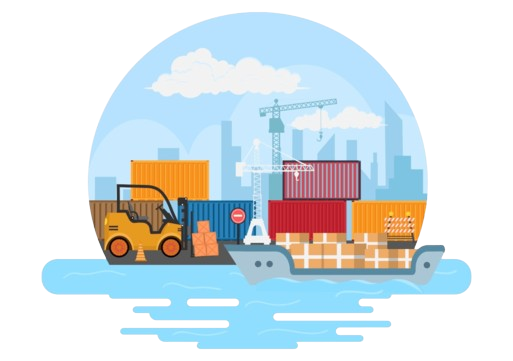Export SEA Freight: Simplifying Global Export Logistics
Welcome to our comprehensive guide on export sea freight, an essential component of international trade logistics. In this guide, we'll delve into the process, considerations, and best practices involved in exporting goods via sea freight.
1. Introduction to Export SEA Freight
Export sea freight refers to the transportation of goods from one country to another via sea vessels. It is a fundamental pillar of global trade, offering exporters a cost-effective and reliable method to reach international markets. Sea freight is particularly advantageous for transporting large volumes of goods over long distances efficiently.
Key Components of Export SEA Freight
a. Shipping Process Overview
The export sea freight process begins with securing cargo space on a vessel. Exporters must properly pack and prepare their goods for shipment, adhering to international shipping standards. Documentation such as commercial invoices, packing lists, and export permits is crucial for compliance and smooth transit.
b. Types of Containers
Exporters can choose from various container types, including standard containers like 20ft and 40ft containers, as well as specialized containers such as reefers (for temperature-sensitive goods), flat racks (for oversized items), and open tops (for easy loading of bulk cargo).
c. Shipping Routes and Transit Times
Major export ports worldwide serve as hubs for sea freight shipments. Transit times vary based on the destination and shipping route, ranging from a few days to several weeks depending on the distance.


Export SEA Freight Procedures
a. Documentation and Paperwork
Successful exportation requires accurate and complete documentation. Exporters must prepare commercial invoices, packing lists detailing contents and weights, and obtain necessary export licenses or permits to comply with customs regulations.
b. Customs Clearance Process
Navigating customs procedures is crucial for exporting goods legally. Exporters must declare goods accurately, pay applicable export duties and taxes, and comply with export control regulations.
Cost Considerations
a. Freight Charges and Rates
Freight costs are influenced by factors such as shipment distance, cargo volume, and market demand. Exporters should also consider additional charges such as terminal handling fees and fuel surcharges when budgeting for sea freight.
b. Export Duties and Taxes
Export duties and taxes vary by country and are determined based on the type and value of exported goods. Understanding tariff classifications and duty calculation methods is essential for accurate cost estimation.
Risk Management and Insurance
Export sea freight carries inherent risks, including damage or loss of goods during transit. Export cargo insurance provides financial protection against these risks, ensuring exporters are covered in case of unforeseen events.
Environmental Impact and Sustainability
Efforts to reduce the environmental impact of sea freight are gaining traction. Exporters can contribute to sustainability by choosing eco-friendly shipping practices and supporting initiatives aimed at reducing the carbon footprint of maritime transport.
Selecting a Freight Forwarder or Shipping Line
Choosing a reputable freight forwarder or shipping line is critical for successful export operations. Exporters should consider factors such as service reliability, transit times, and customer support when selecting a shipping partner.
Tips for Successful Export SEA Freight Management
To optimize export sea freight operations, exporters should focus on proper packaging and labeling of goods, leverage tracking and monitoring tools to manage shipments efficiently, and maintain clear communication with freight partners throughout the process.
Case Studies and Examples
Explore real-world examples of successful export sea freight operations, highlighting best practices and lessons learned from industry experiences.
Future Trends in Export SEA Freight
Advancements in technology, including blockchain and automation, are shaping the future of export logistics. Expectations for sustainable shipping practices and digitalization will continue to influence the evolution of export sea freight.
Conclusion
Export sea freight is a cornerstone of global commerce, enabling businesses to reach customers worldwide. By understanding the intricacies of export logistics and embracing best practices, exporters can navigate sea freight operations efficiently and unlock growth opportunities in international markets.
